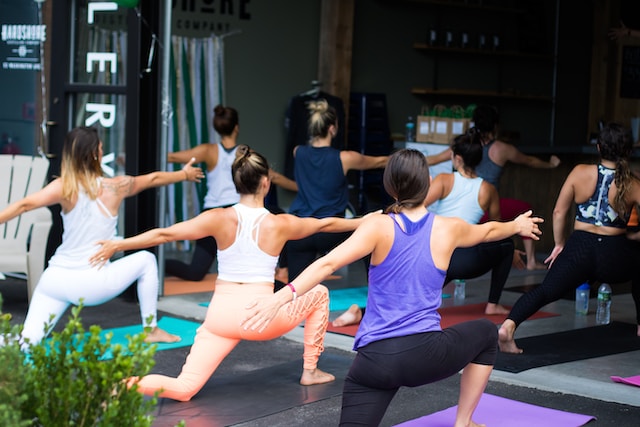Yoga, an ancient practice that originated in India, offers a holistic approach to improving physical, mental, and emotional well-being. While yoga comprises various postures and practices, one of the fundamental elements that underpins it all is the art of deep breathing. In this beginner’s guide, we will explore the significance of deep breathing in yoga and how it can have a transformative impact on your health and life.
Understanding Deep Breathing in Yoga:
Deep breathing, often referred to as “diaphragmatic breathing” or “belly breathing,” is a fundamental aspect of yoga. It involves breathing deeply into your diaphragm, rather than shallow breaths that only engage the chest. The primary focus is on drawing breath in through the nose, allowing the abdomen to expand, and then exhaling slowly and completely.
The Benefits of Deep Breathing:
- Stress Reduction: Deep breathing activates the body’s relaxation response, reducing stress hormones like cortisol. It helps calm the nervous system, which can be especially helpful in managing stress and anxiety.
- Improved Lung Capacity: Deep breathing enhances lung function, increasing the exchange of oxygen and carbon dioxide. This can lead to better overall respiratory health.
- Enhanced Oxygen Flow: Deep breaths facilitate the delivery of oxygen to cells and tissues, promoting better physical performance and mental alertness.
- Balanced Nervous System: Deep breathing helps balance the autonomic nervous system, which regulates involuntary bodily functions. This balance can improve digestion, circulation, and overall bodily function.
- Mental Clarity: Deep breathing can clear the mind, boost focus, and enhance cognitive function. It’s often used as a mindfulness tool to improve concentration and decision-making.
- Strengthened Core Muscles: Deep diaphragmatic breathing engages core muscles, promoting abdominal strength and stability. Over time, this can contribute to better posture and core health.
How to Practice Deep Breathing in Yoga:
Deep breathing is a simple yet powerful practice. Here’s a step-by-step guide to get you started:
- Find a Quiet Space: Begin by finding a quiet, comfortable place where you won’t be disturbed. You can sit or lie down; just make sure your spine is straight.
- Relax Your Body: Close your eyes and take a moment to relax your body. Release any tension in your muscles and let go of stress.
- Focus on Your Breath: Place one hand on your chest and the other on your abdomen. Breathe in slowly through your nose, allowing your abdomen to rise. You should feel your diaphragm expanding, not your chest.
- Exhale Slowly: Exhale through your nose or mouth, letting go of any tension. As you exhale, gently contract your abdominal muscles to expel the air fully.
- Set a Rhythm: Establish a rhythm that feels comfortable for you. Inhale for a count of four, hold for a count of two, and exhale for a count of four. Adjust the rhythm to what feels natural.
- Mindful Awareness: As you practice deep breathing, pay attention to your breath and nothing else. If your mind wanders, gently bring your focus back to your breath.
- Practice Regularly: Deep breathing is most effective when practiced regularly. Start with a few minutes each day and gradually extend the duration as you become more comfortable.
Incorporating Deep Breathing into Your Yoga Practice:
Deep breathing is integral to all forms of yoga, whether it’s Hatha, Vinyasa, Ashtanga, or any other style. Here are a few ways to incorporate deep breathing into your yoga routine:
- Begin and End Your Practice: Start and finish your yoga session with a few minutes of deep breathing. It sets the tone for your practice and helps you transition in and out of the postures.
- Breath Awareness: During your yoga poses, pay attention to your breath. Coordinate your movements with your inhalations and exhalations. This not only enhances your postures but also deepens your practice.
- Pranayama: Pranayama is the yogic practice of breath control. Explore different pranayama techniques like Ujjayi breath, Kapalabhati, and Anulom Vilom, which can have specific effects on the mind and body.
- Savasana: In Savasana (Corpse Pose), a relaxation posture at the end of your practice, deep breathing can promote profound relaxation and a meditative state.
In Conclusion:
Deep breathing in yoga is a simple yet transformative practice that can benefit your physical, mental, and emotional well-being. By incorporating this fundamental element into your yoga routine, you can harness its power to reduce stress, enhance lung function, and find a deeper connection to your body and mind. Whether you’re a beginner or an experienced yogi, deep breathing is an essential tool that can deepen your practice and improve your overall quality of life.

